Wildcard characters are commonly used in some basic Excel formulas, i.e., COUNTIF, COUNTIFS, VLOOKUP, FIND AND REPLACE, SEARCH, CONDITIONAL FORMATTING, etc.
Here are some samples of how it works:
1. VLOOKUP
In a normal circumstance, VLOOKUP looks up the precise value
laid out in an inventory and returns the corresponding value during a table.
In the example below, the task is to seek out out the amount of delivery points for Austin. But rather than Austin, the list displays Austin, Texas.
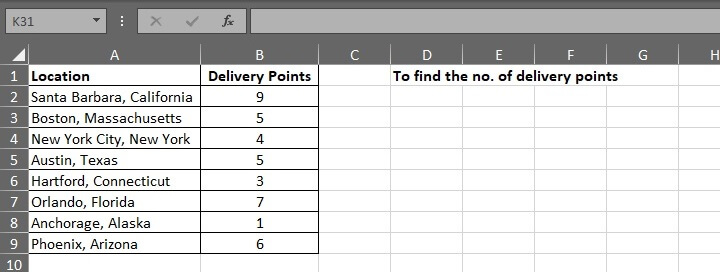 To find the information, enter:
To find the information, enter:
=VLOOKUP(D3&"*";A1:B9;2;FALSE)
By inserting “*”, it tells Excel to look for any text that begins or ends with the lookup value in D3 – Austin, and it's going to have any number of characters after the text.
It finds an exact match, which is 5 in this case. 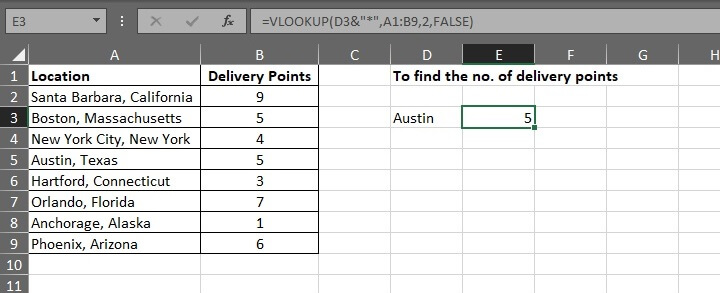
2. FIND AND REPLACE
Using
wildcard characters in Excel find and replace is beneficial to correct data and
make the info set consistent throughout the database.
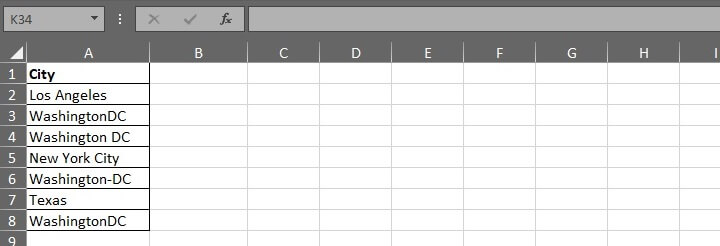 The cities under Washington DC could be confusing.
The cities under Washington DC could be confusing.
To rectify, use the straightforward “FIND AND REPLACE” function in Excel.
- Find Washington with a D after it and replace it as “Washington DC”

- Click “Replace All” and now all the “Washington DC” values are aligned, resulting in a clean database.

3. COUNTIF
To include wildcard characters as
i.e., there’s
In this scenario, each ? refers to one character.  Since
Since
To find out, enter:
=COUNTIF(A2:A9;"???")
The return value is 2. 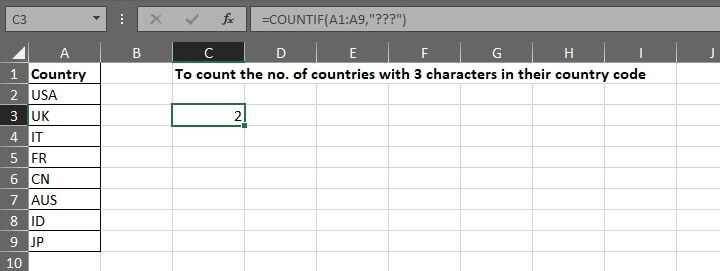
4. CONDITIONAL FORMATTING
In addition to formulas, wildcard charactersSay, the task is
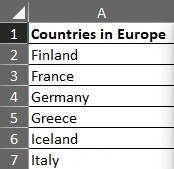
- Go to Conditional Formatting > New Rule > Select “Use a formula to determine which cells to format.”
- Input the formula below.
The idea is to find countries with names that begin with the letter G. So * (asterisk) is used to request Excel to return values that begin with G and are followed by any number of characters.
- Select the desired formatting — in this case, font in red.

- Click Okay, then apply the same format to the rest of the cells under Column A by using Format Painter.
The result is below:

Excel wildcard not working? Here's why
Excel wildcard not working? Here's why
Mentioned previously,
- i.e., to find “Aus?”, “Aus~?” is required.
If you have any query or want any help related to excel feel free to join our Telegram channel and message us..
Channel link :


2 Comments
Nice post
ReplyDeleteThanks for share
Thank you..😊 For more post subscribe to our blog and telegram channel where we give daily updates..
Delete